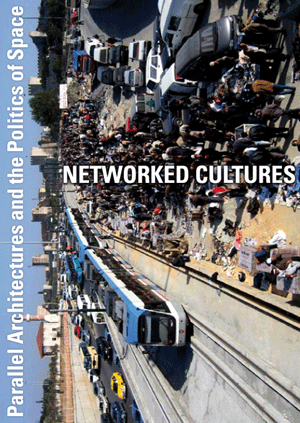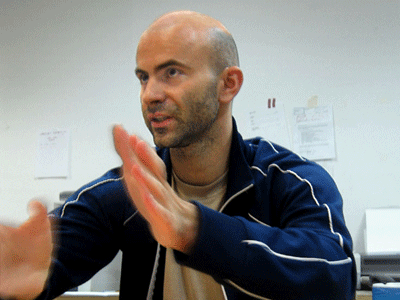_loginregistrieren_database_5 Factories - Worker Control in Venezuela Dario Azzellini & Oliver Ressler _ALMOSTREAL ECF _AnArchitektur Jesko Fezer _Arizona Road Azra Aksamija _Balkan Konsulat rotor _Bata-ville: We are not afraid of the future Nina Pope + Karen Guthrie / www.somewhere.org.uk _Black Benz Race krcf in collaboration with Felix Stalder, Arben Gecaj, Faton Topalli and Osman Osmani _Black Sea Files Ursula Biemann _Camp La Jolla Military ParkOwen Mundy _CHANGE REALITY: Renaming the Streets of Zagreb REINIGUNGSGESELLSCHAFT _Conceptual Paradise. There is a place for sophistication Stefan Roemer _de-regulation Irit Rogoff, Kutlug Ataman, Stefan Roemer_news ____________Bloomberg SPACE, London ____________Kumu Art Museum Tallinn ____________Open Space, Open Systems - Vienna ____________CAA 2011 Conference, New York ____________Forum Stadtpark, Graz ____________Symposium, Istanbul ____________lungomare, Bozen/Bolzano ____________Metropolis Biennale 2007-17, Copenhagen ____________new publication available now ____________Mestna Galerija, Ljubljana ____________Livestream of Networked Cultures documentary ____________ |
_ConversationsMarko Sancanin
Marko Sančanin
PM/HM: In the group Platforma 9,81 you’ve been investigating possibilities of translating various local situations and histories into each other. When pursuing a politics of connectivity, how do you deal with the problems of sharing and of allowing for a sense of commonality without resorting to notions of similarity and homogeneity? Marko Sančanin: There are three things I can briefly say about this. The first has to do with comparing collaborative networks in western Europe and eastern or Non-EU Europe; the second, with architectural research and how it’s displayed; and the third, with answering the general question of what we all have in common. I will start with the third: Do we actually have anything in common? To answer this, it would be necessary to make some local inquiries. Though there’s one thing I’m certain about: we all lack something with respect to how the public domain is transformed, and hence how such transformations are governed. We all lack something that we aren’t able to express – and yet we lack it together. This is probably the best possible diagnosis and forecast for cultural “West-meets-East” experiments. I think it’s difficult to work with us because we tend to produce excess meaning. Moreover, we often tend to rewrite our programme briefings and project proposals. We operate in loops – proceeding from the starting hypothesis while also probing practical parameters, and this is not a particularly efficient approach for a group of architects. A lot of time, energy and money goes into extra activities that are intended to increase institutional support for the non-institutional. This is a completely natural development. Since we’ve acquired a certain amount of knowledge and expertise via an ideological programme (though sometimes in opposition to the establishment), there is a clear need and love for truth and knowledge, as well as an epistemological imperative to develop institutions out of our own organisations. This is a developmental stage and through it we would like to reach a point where we can actually sustain our activities. The cultural market sometimes gives you more media visibility, and enables you to have an impact on policies...for example, urban policies. However many of these so-called research projects have more to do with displaying phenomena in a white cube than provoking real change. At the end it has more to do with social pornography than intellectually committed and engaged practices. It is sometimes almost impossible to collaborate with people who have no methodology, theoretical background or real interest in the new communitarian ideas embedded in architectural practice. Or at least, this has been our experience. When we talk about comparing collaborative networks in Western Europe and the Balkans, we’re still speaking about a situation in which there is a complete lack of resources, and this situation actually forces people to collaborate, to share ideas, funds, infrastructure and equipment. In Western Europe the situation is different. It’s one of plenty. Or at least this is what friends in Western Europe seem to be experiencing. Basically everyone involved in these activities is competing with each other, especially because of the growing demand on the market for these kinds of architectural practices. Every museum or gallery wants such projects to spice up its annual programme a bit. PM/HM: In what ways does Platforma 9,81 try to go beyond these limitations you’ve mentioned, for instance, limitations of institutional demand or individual authorship? Marko Sančanin: In a collective, the question of the distribution of capital, whether it’s material or cultural – or symbolic like authorship – is always a latent reason for antagonisms within the group. The way we negotiate these antagonisms and particular interests is connected with the degree to which the final product is also produced by others – non-architects in particular. If we manage to produce something that has been clearly made with knowledge outside our own expertise, then it’s difficult to claim ownership and this influences the way the final product is interpreted, translated or displayed. Local circumstances have contributed to many organisations in Zagreb collaborating because they share common standpoints on the political, cultural and economic circumstances of transition. Organisations working in different fields – such as architecture, visual arts, performing arts or new media – are somehow able to understand each other and come together. Since a lack of resources also economically defines how we operate and share ideas and resources, it has been only natural for us to collaborate with people from the Multimedia Institute, the What, How and for Whom and the Centre for Drama Arts, and other organisations. We also share a mutual interest in “instituent” practices of knowledge production and have started parallel educational programmes. Establishing educational environments is a form of community work that examines the issue of authorship, what we produce and how, who invests how much and who benefits from it. This involves a totally different understanding from the one architectural practices usually have. Many other organisations from the Zagreb Cultural Capital 3000 platform have also participated in such activities. PM/HM: Can these networked practices in the Balkans also provide a reference for engagement in the increasing fragmentation elsewhere? Marko Sančanin: As an architect you have to borrow concepts to even think about a project. Architecture has always involved the application of already existing concepts. So I see nothing surprising in thinking that the uncertain state of the EU is a kind of big Balkan concept for a complex political system of unpredictable shape. Though I don’t see any further implications here. Yes, we could say that Europe, in trying to solve the Balkan problem, has been Balkanised itself. Well, so what. The collaborative practices of independent cultural scenes from Croatia or Serbia have nothing to do with this. At least I haven’t seen any valid proof to the contrary. I can just say that the common platform that connects those of us from the Balkans who are involved in such architectural practices is probably the same one that causes us to collaborate with different organisations locally. We share some of our ideological viewpoints and they’re in opposition to the way history is reproduced here; we also have in common some very similar phenomena happening in urban and rural environments; and we all come from the same type of economy and political system. And since we basically speak the same language, we understand each other better than we would be able to in English. So these are the reasons why we all work together. It’s also why I am optimistic about future collaborations. Sometimes I get a bit frustrated because I can’t help thinking that European intellectuals, artists or cultural managers believe that some form of politico-cultural archaeology in the Balkans might provide them with fresh concepts for European cultural development in general. Apart from the fact that such a viewpoint is still extremely colonial, I don’t think we can expect to understand the social experiments in ex-Yugoslavia without understanding the multi-layering of cultural, political and economic relations that have been operating there from the start. You can’t just turn “socialist hedonism” or “self-government” into a fetish. A rather hollow expectation exists, one that harbours the hope there is something tangible – a conceptual social system – that can be connected with ex-Yugoslavia or the Balkans. There’s a work by Andrei Tarkovsky that greatly resembles this situation. For the past couple of years we’ve all been something like guides through the “Zone”. People are still coming from the West to interview us. We take them to see post-industrial wastelands or unexpected urban phenomena and to listen to the stories of artists who gave conceptual, body art performances before they were invented in the West, and all that kind of stuff. But the problem is that this “Zone” is now empty. There’s no longer anything there for you to see or understand. The real truth is that when you visit the Balkans, you’re most likely to find some neurotic fantasy, one you’ve brought with you yourself.
|
_broadcasts_conversations+ Ana Dzokic and Marc Neelen+ Ayreen Anastas and Rene Gabri + atelier d'architecture autogérée (aaa) + Asya Filippova + Sophie Hope and Sarah Carrington + Branca Curcic + Christoph Schaefer + Campement Urbain + Claudia Zanfi + Despoina Sevasti and Poka-Yio + Erden Kosova + Helmut Batista _textsRadio as Spatial Practiceby: Paulo Tavares Survival Kits: Artistic Responses to Globalizationby: Marga van Mechelen What Ever Happened to Cultural Democracy?by: Sophie Hope I don't know how to explain ...by: Anca Gyemant Trading Placesby: Peter Moertenboeck & Helge Mooshammer Milosevic as Architectby: Srdjan Jovanovic Weiss When the Unavoidable Knocks at the Door ...by: Gulsen Bal Tracing Translocality: The BlackBenz Raceby: Felix Stalder travelling lexicon towards a global positioning systemby: Celine Condorelli |
